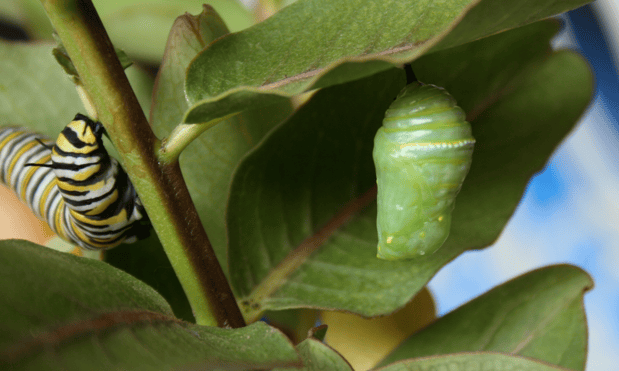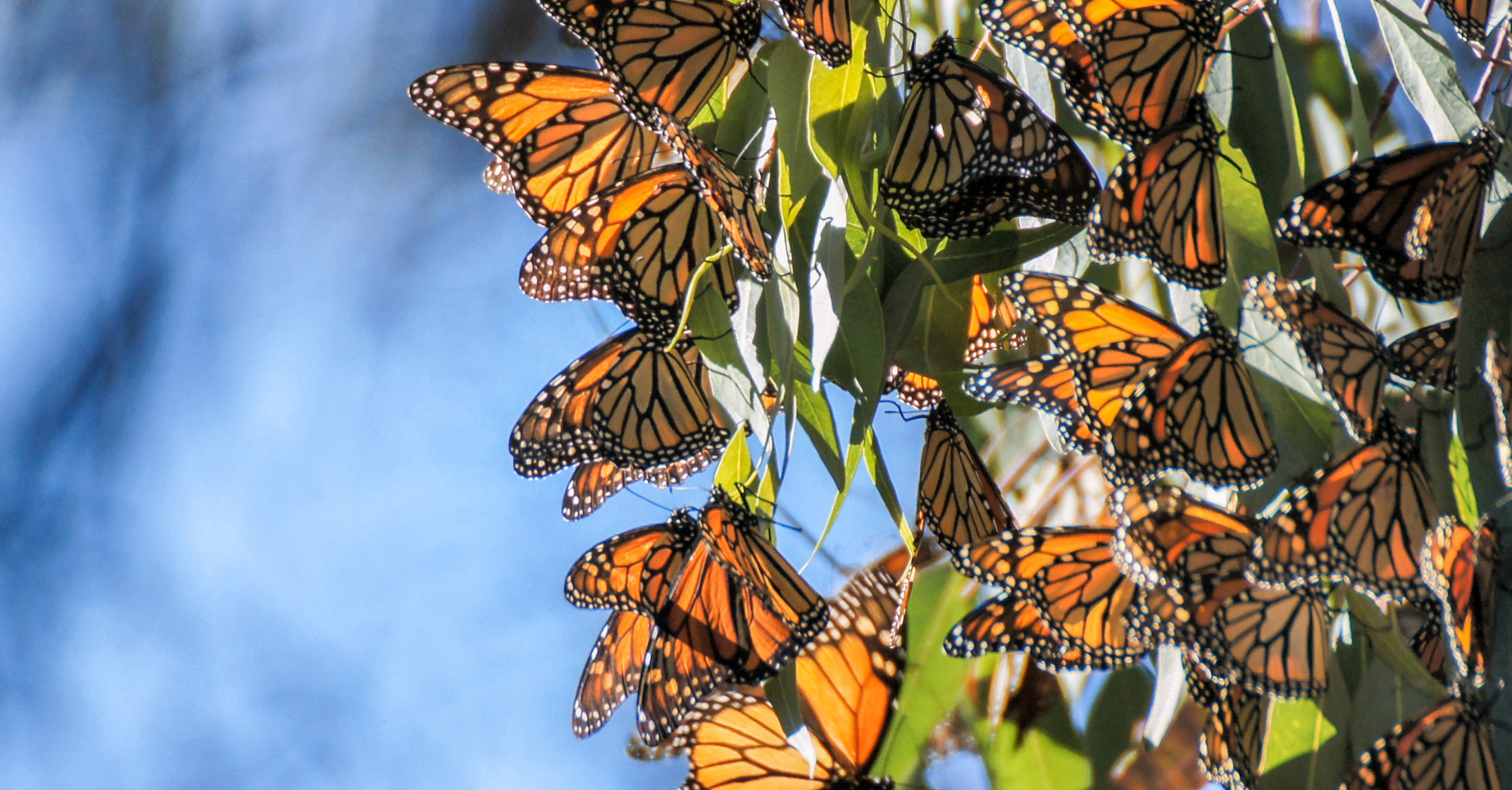Did you know monarchs are one of the few butterfly species known to make a two-way migration - just like birds? Each fall, Western monarch butterflies travel from their summer breeding spots to overwintering locations along the Pacific coast where they live for six to nine months. Remarkably, they return to the same groves of trees each year, and California is the only place in the United States that regularly hosts awe-inspiring sights of monarchs clustered together for the winter.
Unfortunately, these precious and charismatic butterflies, with their large size and striking colors, are struggling. A catastrophic population collapse began in 2018 with butterfly counts of just 30,000. Last year, the count dropped again, this time to a baffling 1,914 butterflies – 99.9% lower than counts in the 1980s.

While the direct cause of this decline isn’t known for sure, the butterflies’ primary threats are climate change, habitat loss, and pesticide use. Changing weather conditions disrupt annual migration patterns in both wintering and summer breeding grounds, and insecticides used to control pests often kills monarchs.
Monarchs also need places to reproduce and feed, relying heavily on milkweed – the only source of food for monarch caterpillars -- which is also decreasing in availability due to herbicide use.

There is hope for monarch butterflies and other important pollinators:
Monarchs need more habitat to support their repopulation and migration, and we at the Authority are proud to do our part to help this iconic California species.
On Thursday, June 24, Google announced they will spend $500,000 to create new monarch and other pollinator habitat through a grant to the Xerces Society and Peninsula Open Space Trust (POST). Google’s grant to POST in coordination with the Open Space Authority will help protect and restore hundreds of acres of important habitat south of San José in Coyote Valley.
"I am excited that with Google’s grant to POST, Santa Clara Valley Open Space Authority will help protect Western monarch butterflies, a species that is in rapid decline and that has a beautiful legacy of fall migration; a migration that binds many countries," says Sergio Jimenez, District 2 Councilmember for the City of San José. "By adding more native milkweed and nectar plants, we can protect not only Monarch Butterflies, but many other pollinators and wildlife as well. I am proud that local entities are playing such critical roles on the world stage!”
This grant will build on the Authority’s ongoing work protecting Monarch habitat. As noted by the Western Association of Fish and Wildlife Agencies, nearly all of Authority’s managed land is potential habitat for butterflies, meaning it supports milkweed and is far enough away from cities for butterflies to feel comfortable (though providing pockets of habitats in cities is also encouraged). Field staff have been mapping and protecting milkweed plants throughout the preserves to support these creatures, and greatly encourage your help in the process.

Here’s how you can help!
- The peak migration for Western monarchs is in October. Plant native milkweed and keep an eye out for monarch caterpillars and adults between September and November.
- If they don’t already, ask your local nursery to stock native milkweed plugs. Increased demand will encourage local suppliers to prioritize this critical food source.
- Plant nectar bearing flowers to provide food sources for adult butterflies year-round.
- Please report all your sightings to Western Monarch Milkweed Mapper so that we can better understand the migration, see if there has been an improvement since 2020, and to cheer on these special creatures! Monarch Butterfly Migration and Overwintering (fs.fed.us)
Read our last monarch story here.

